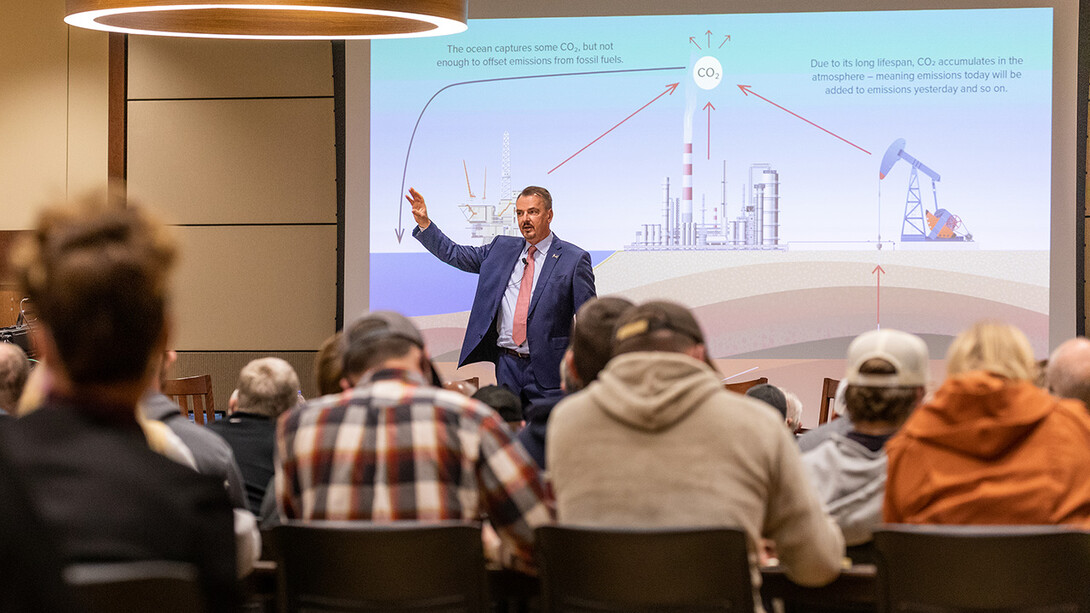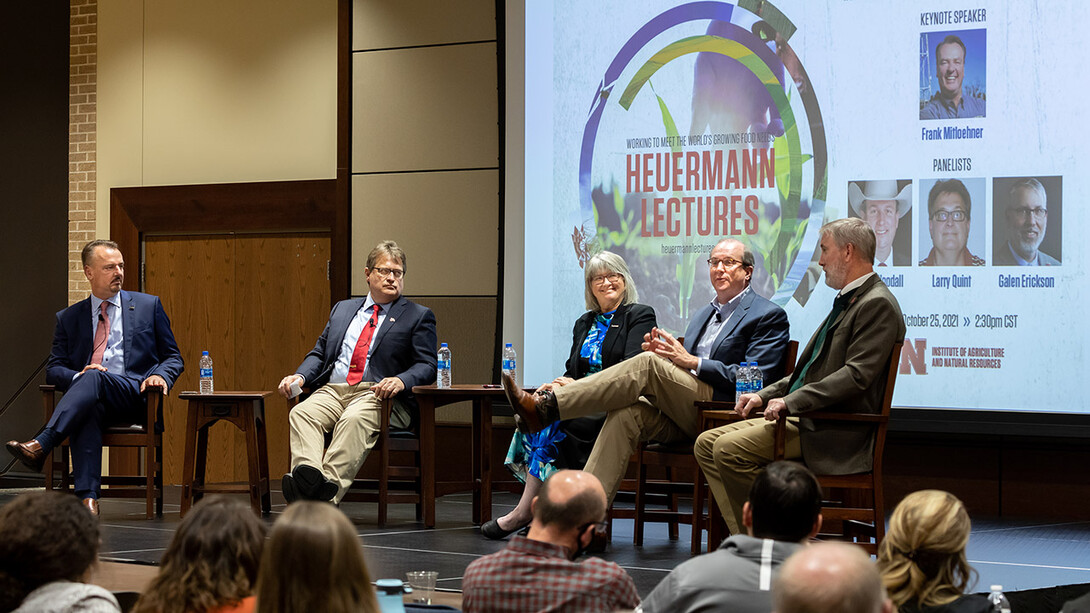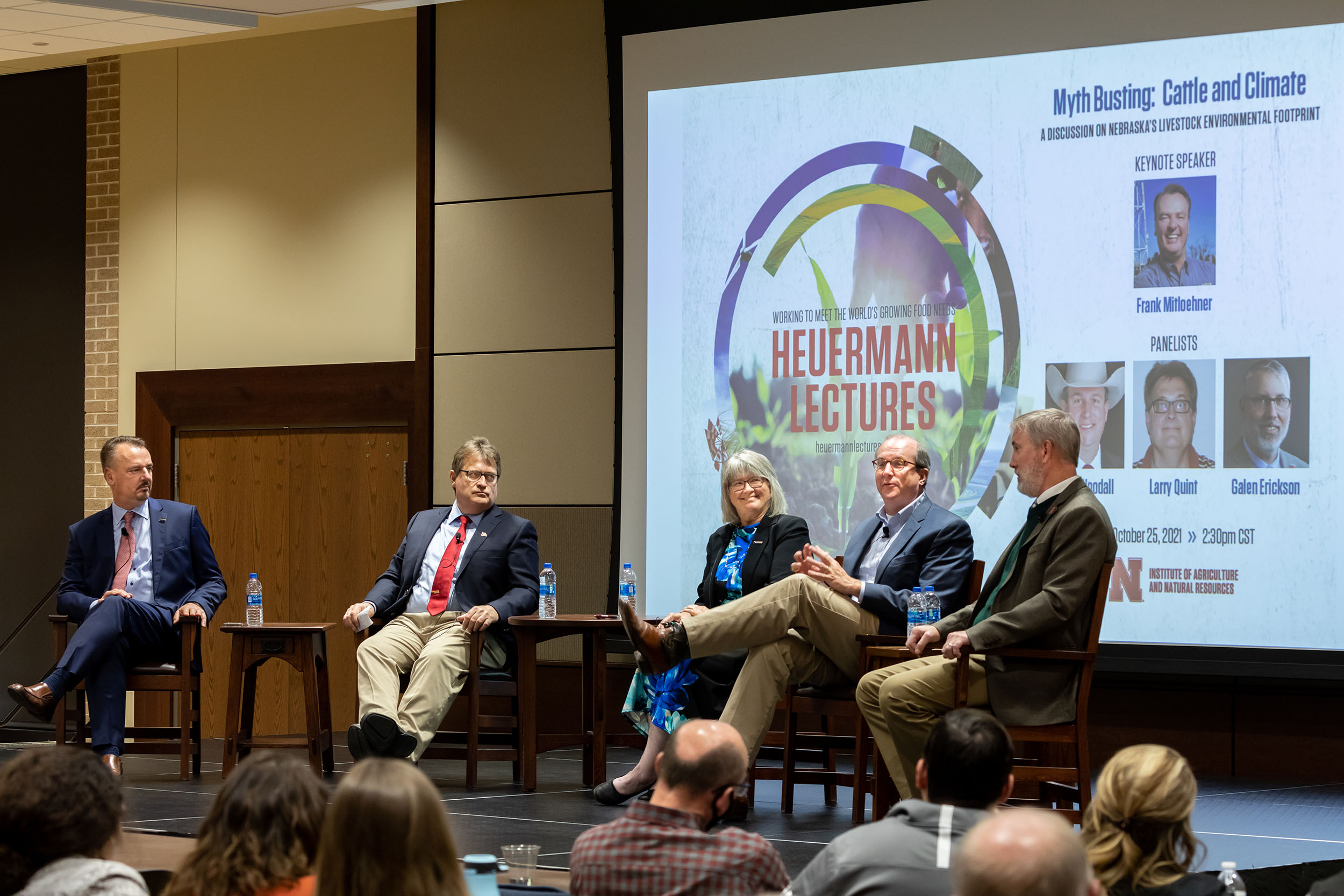
On Oct. 25, Frank Mitloehner, a leading researcher in the realm of livestock sustainability, asked a packed auditorium on the University of Nebraska–Lincoln’s East Campus to picture three coffee cups — a ceramic cup, a Styrofoam cup and an insulated reusable mug.
Coffee will stay warm in any of those cups, but to widely varying degrees. And just as different mugs trap heat differently, so do different greenhouse gasses, Mitloehner said. Carbon dioxide remains in the atmosphere trapping heat from the sun for about 1,000 years from emission. Nitrous oxide lasts about 110 years. Methane, which cattle produce as they digest grasses and then emit through belching and manure, remains in the atmosphere for about 12 years.
“I call it ‘the fast and the furious,’” Mitloehner said. “Methane is a potent greenhouse gas. Methane is a greenhouse gas we want to reduce. But it is different. It has a different and much shorter shelf life.”
Mitloehner, a professor of animal science and air quality extension specialist at the University of California, Davis, addressed the crowd as part of the Institute of Agriculture and Natural Resources’ Heuermann Lecture series — the first in-person lecture in the series since January 2020. During his talk, Mitloehner argued the environmental impact of livestock production has been overstated. For example, livestock emissions account for just 4% of greenhouse gasses, while fossil fuels contribute up to 80%, he said.
It’s still important for the livestock industry to reduce greenhouse gas emissions, Mitloehner said, but his research, which is gaining acceptance among climate and environmental experts, shows that livestock production is not the environmental culprit it has been made out to be.

In California, for example, dairy farmers have begun storing animal waste in covered lagoons rather than open ones. The covered lagoons keep methane out of the air and trap the gas so it can be converted into renewable fuel, Mitloehner said. Since 2015, when California began providing dairy farmers with financial incentives to adopt covered lagoons and other methane-reducing practices, California has reduced its methane emissions by about 25%.
“I believe there is way more of an opportunity than a challenge,” he said.
After his talk, Mitloehner was joined by a panel of beef industry experts, who discussed some of the opportunities and challenges facing the industry. Panelist included Colin Woodall, CEO at the National Cattlemen’s Beef Association; Larry Quint, research fellow at Conagra Foods; and Galen Erickson, Cattle Industry Professor of Animal Science at Nebraska. Barb Cooksley, a prominent rancher from Anselmo, moderated the discussion.
The panelists discussed measures the beef industry is taking to be more sustainable, how they’re educating consumers about the actual environmental impact of animal agriculture, and Husker research that could help Nebraska livestock producers achieve carbon neutrality, among other topics.
Conagra, for example is working to reduce its carbon emissions by 2030, Quint said. The National Cattlemen’s Beef Association is surveying consumers to better understand how issues such as sustainability and animal welfare inform their purchasing decisions, Woodall said. And the university is engaged in research to better understand how changes in diet could impact cattle methane emissions, as well as the variance in emissions among different ways of producing beef, Erickson said.
“We have to understand emissions from diverse production systems,” he said.
All of these efforts together can help reduce methane emissions and better position the beef industry for a sustainable future, Mitloehner said.
“Sustainability is not a goal,” he said. “It’s a path. You never really get there, but you make constant progress.”









